Birding in Charara, Zimbabwe with the Swarovski CL Companions
Field Report: Birding with the Swarovski CL Companion Binoculars in Charara, Zimbabwe
I recently got the opportunity to spend a few days at Charara, a wildlife and fishing camp located less than 30km from Kariba Town, but within a Zimbabwean National Parks wildlife area on the banks of the eastern basin of Lake Kariba.
Many locals use Charara Bay as a base camp to fish for species like the mighty Tigerfish on the lake and whilst I did enjoy some fishing, my main interest was to observe and photograph the local wildlife and in particular the birds.
As well as my photography and some night vision equipment, I also brought along a pair of Swarovski CL Companion 8x30 Binoculars to use and test.
The Birds
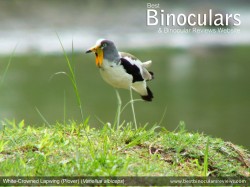 Within the main Chalet and campsite area of Charara there is a huge amount of native trees as well as a well watered lawn and as such you get a lot of woodland birds attracted to the area with sightings of species like Rollers, Starlings, Wood-Hoopoes, Turacos and Hornbills being fairly common.
Within the main Chalet and campsite area of Charara there is a huge amount of native trees as well as a well watered lawn and as such you get a lot of woodland birds attracted to the area with sightings of species like Rollers, Starlings, Wood-Hoopoes, Turacos and Hornbills being fairly common.
Then down by the waters edge you obviously find many wading and water birds like Lapwings (Plovers), Crakes, Jacanas, Storks, Egrets, Herons, Cormorants and Darters.
Many species of raptor are also found in this area with sightings and the calls of the African Fish-Eagle being a very common feature.
One of the more interesting finds was a Coucal that I photographed whilst walking in the bush not far from the main Charara camp.
At the time I thought nothing of it, assuming it was the Senegal Coucal (Centropus senegalensis) which is a fairly common sighting.
But once I got back to Harare and started going through my pics, I noticed that it has a barred tail base which identifies it as the Burchell’s Coucal (Centropus burchelli). The interesting bit is that according to my Sasol and Roberts birding books, these should not be found anywhere near this far north west.
See the table below for my photos and a list of birds that I managed to identify during my short stay.
The Swarovski CL Binoculars
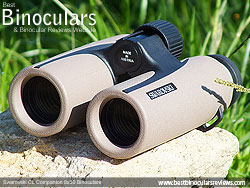 I decided on the Swarovski CL Companions for this trip for a number of reasons:
I decided on the Swarovski CL Companions for this trip for a number of reasons:
Having recently reviewed them, I knew that they were an excellent pair of binoculars (they scored an outstanding 88% on my scale) and their size makes them an ideal choice for travelling and for carrying in the field, especially if you have other equipment to carry as well.
Size Matters
My main objective for this expedition was to photograph birds and so I knew that for most of the time, I would be carrying around my camera, telephoto lenses and tripod as well as my binoculars. So ideally I needed a compact and easy to carry binocular that would not get in they way of all my other gear and what I really wanted was one that could fit into my shirt or coat pocket.
However I also wanted a binocular that would still perform well in poor light in the evenings and very early in the morning when perhaps the light was too poor to photograph and I could just enjoy birding.
So whilst a very compact binocular would be the easiest to carry, I felt that their performance compromise in low light would be too great and the next logical choice would be a mid-sized bin.
Most mid sized bins use 32mm lenses which helps to make them substantially smaller than full sized 42mm binoculars, but even so, they are much to bulky to fit in most shirt pockets and usually still a little too big to carry in anything but the largest coat pockets.
However because I recently had the chance to test and review the Swarovski CL Companion, I knew the smaller 30mm objectives make them even more compact than most normal mids and I knew that they would fit into my lighter jacket pocket.
So with this choice, I was able to get the benefit of a really light and compact binocular that easily outperforms any full compact, yet is not far off the low light performance of most full sized 42mm bins.
Hot Weather
Having said all this, the weather in Charara at this time of year was very hot and so even my lightest jacket was still too much to wear. So instead of fitting them into my pocket, I actually ended up just hanging the Companion CLs around my neck using the strap in the normal way. This worked fine, was much better than a full sized bin and did not really get in the way of my photography. It also had the advantage of making them always at hand when needed. But to be honest I should have brought and used a harness, like the excellent LockDown Optics Deployment System that I accidentally left at home in Harare.
Conclusions
Strong Points:
- I love the Swarovski build quality, they look great and their lightweight, compact open bridge design makes them a pleasure as well as secure to carry about in the field.
- For small mid-sized binocular their low light performance is a real highlight, I have tested these against a number mid to high end 42mm binoculars and to my eyes they produced an image that was as bright or even brighter at twilight
Weaknesses:
- Their Field of view of 124m wide at 1000m (372ft wide at 1000 yards) is not bad and I never thought to my self whilst looking through them that “I wish the FOV was wider” but it does fall a little short of some of the other very best mid sized bins with 8x magnifications.
I won’t repeat all the features and aspects of this CL Companion, as I have already gone over them in great detail in my full review. But I would like to emphasize just how well they performed in low light. I can honestly say that I never found them wanting in this department and could comfortably observe birds in great detail, well after the sun had set.
Overall I thought that these Swarovski 8x30 CL Companion binoculars were an excellent choice for my needs and I would highly recommend them to anyone looking for a sub-mid sized binocular for safaris, for birding holidays and they will make an ideal general use and travel binocular.
Birds Identified in Charara, Zimbabwe (Dec 2012)
The table below lists all the birds I managed to identify whilst in Charara. There were many more that I saw but did not id, but remember my main focus was on photography rather than simply identification.
Birds with a link are to the photos that I took – I did manage some others, including the Levaillant’s (Striped) Cuckoo (Oxylophus levailantii) but did not feel that the photo was good enough to publish.
Species |
Scientific Name |
| White-breasted Cormorant | Phalacrocorax lucidus |
| African Darter | Anhinga rufa |
| Green-backed Heron | Butorides striata |
| Cattle Egret | Bubulcus ibis |
| Black Heron | Egretta ardesiaca |
| Grey heron | Ardea cinerea |
| Goliath Heron | Ardea goliath |
| African Openbill (Openbilled Stork) | Anastomus lamelligerus |
| Yellow-billed Stork | Mycteria ibis |
| Marabou Stork | Leptopilos crumeniferus |
| White-faced Duck | Dendrocygna viduata |
| Spur-winged Goose | Plectopterus gambiensis |
| African Fish-Eagle | Haliaeetus vocifer |
| Helmeted Guinea-Fowl | Numida meleagris |
| African Jacana | Actophilornis africanus |
| Black-Winged Stilt | Himantopus himantopus |
| Blacksmith Lapwing (Plover) | Vanellus armatus |
| White-Crowned Lapwing (Plover) | Vanellus albiceps |
| Wood Sandpiper | Tringa glareola |
| Common Sandpiper | Actitis hypoleuca |
| Laughing Dove | Streptopelia senegalensis |
| Cape Turtle Dove | Streptopelia capicola |
| Namaqua Dove | Oena capensis |
| Burchell’s Coucal | Centropus burchelli |
| Grey Lourie | Corythaxoides concolor |
| Levaillant’s (Striped) Cuckoo | Oxylophus levailantii |
| Lilac-breasted Roller | Coracias caudata |
| Broad-billed Roller [2] | Eurystomus glaucurus |
| European Bee-eater | Merops apiaster |
| Malachite Kingfisher | Alcedo cristata |
| Pied Kingfisher | Ceryle rudis |
| Red-billed Woodhoopoe | Phoeniculus purpureus |
| Red-billed Hornbill [2] [3] | Tockus erythrorhynchus |
| African Grey Hornbill | Tockus nasutus |
| Crested Barbet | Trachyphonus vaillanti |
| Black-collared Barbet | Lybius torquatus |
| Bearded Woodpecker | Thripias namaquus |
| Fork-tailed Drongo | Dicrurus adsimilis |
| Black-eyed Bulbul | Pycnonotus barbatus |
| African Paradise Flycatcher |
Terpisphone viridis |
| Fiscal Shrike | Lanius collaris |
| Puffback | Dryoscopus cubla |
| Black-crowned Tchagra | Tchagra senegala |
| Black-headed Oriole | Oriolus larvatus |
| African Golden Oriole | Oriolus auratus |
| Meves’s (Long-tailed) Starling | Lamprotornis mevesii |
| Red-Winged Starling | Onychognathus morio |
| White-bellied Sunbird | Nectarinia talatala |
| Grey-headed Sparrow | Passer griseus |
| White-browed Sparrow-weaver |
Ploceopasser mahali |
| Masked Weaver | Ploceus velatus |
| Blue Waxbill | Ureaginthus angolensis |
| Red-billed Firefinch | Lagnosticta senegala |

 Article | Posted by Best Binocular Reviews
Article | Posted by Best Binocular Reviews 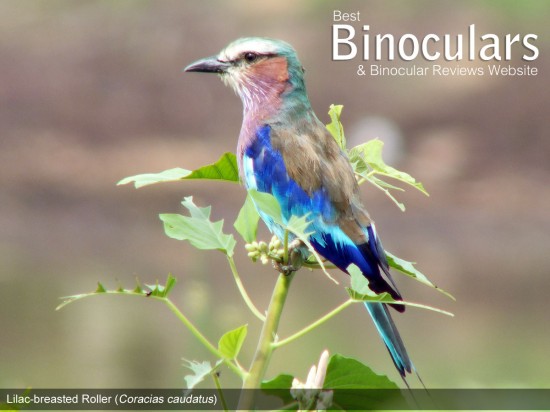
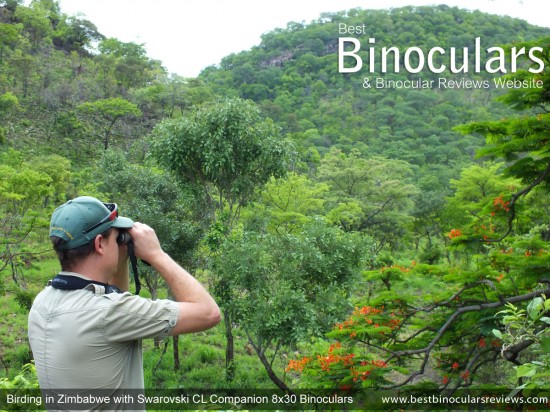
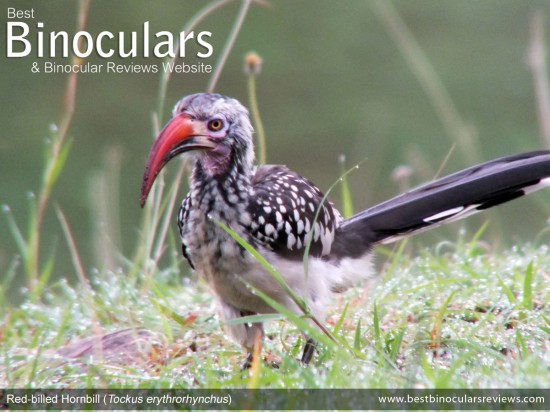
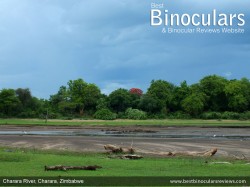
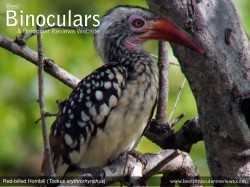
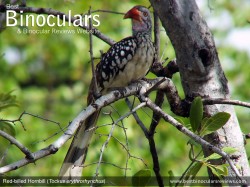
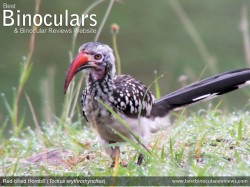
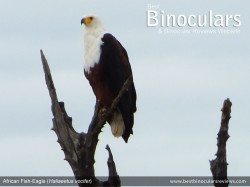
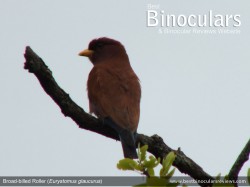
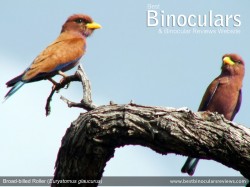
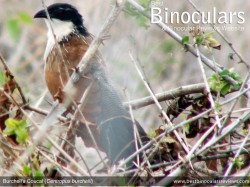
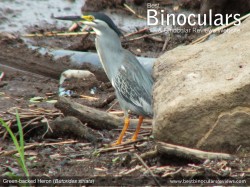
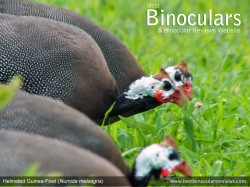
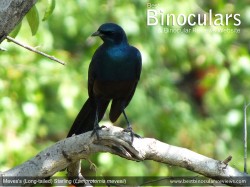
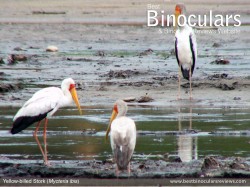
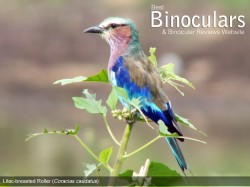
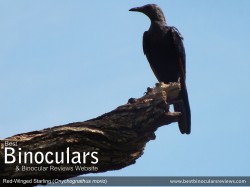
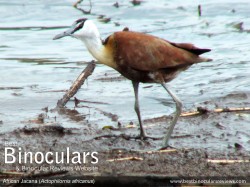
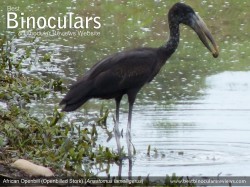
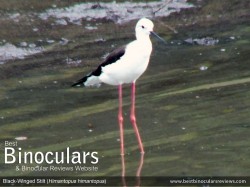

 Categories:
Categories:  Tags:
Tags: 

